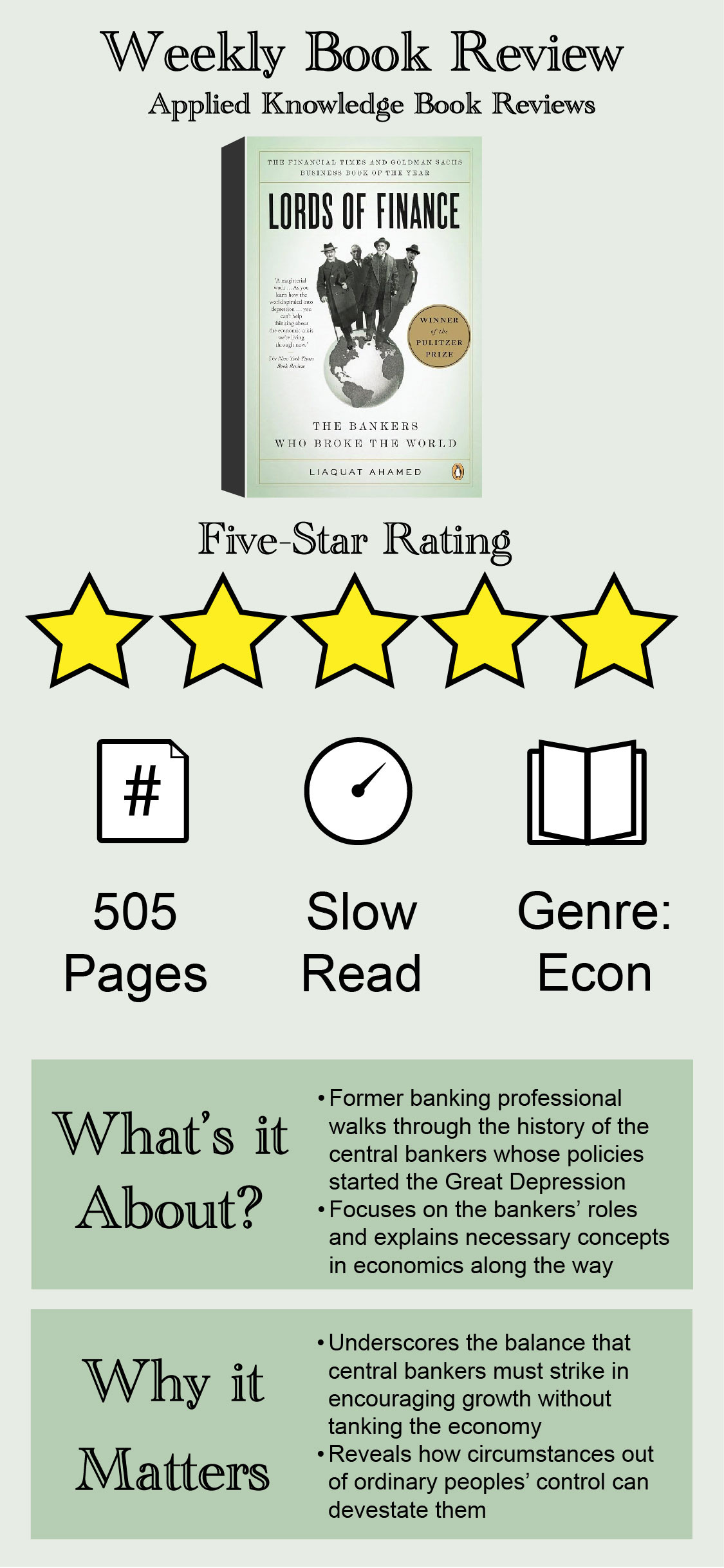How the Great Depression Happened
Many people understand that the stock bubble burst, but the details about what caused the initial mania are less well-known.
The horrors of the Great Depression are well documented. The United States suffered record unemployment, peaking at 25% in 1933. Some cities were so destitute that officials slaughtered zoo animals for meat.
There were many overlapping factors that caused the Great Depression, but Lords of Finance focuses on the four most influential central banks in the world — the United States, Britain, France, and Germany — and how they came together to help cause the Great Depression.
The author, Liaquat Ahamed, does a great job of spelling out how the Great Depression unfolded. Lords of Finance includes passages that explain economic concepts and draw clear lines of cause and effect between financial policies and their consequences.
It’s easiest to focus on what central banks are for and how the Fed lit the fuse that sparked the Great Depression.
Central Banks, Interest Rates, and Overconfidence
In his introduction, Ahamed explains what a central bank is:
“Boiled down to its essentials, a central bank is a bank that has been granted a monopoly over the issuance of currency. This power gives it the ability to regulate the price of credit — interest rates — and hence to determine how much money flows through the economy.”
This is a crucial role. If the money supply is too low, economic activity decreases. However, growing the money supply too quickly results in inflation and a devaluation of currency.
Unsurprisingly, mismanaging the money supply can lead to negative economic consequences.
The Spark: Lowered Interest Rates
After World War I, Germany was crippled by reparation payments, then experienced hyperinflation which made its currency worthless. France and Britain were also recovering from the war’s devastation.
In contrast, the United State’s economy was booming. The country was still intact, and most of the world’s supply of gold was now in the United States. The world’s largest economies were still on the gold standard. For the world economy to continue functioning, some of the gold in the United States eventually had to move to the recovering European economies.
The four heads of the central bankers met to discuss economic challenges in 1927. Britain was concerned about how low its gold reserves had fallen. The head of Britain’s central bank “made it clear that his gold reserves were critically low. Any further erosion would force him to put up rates.” Increasing rates in Britain would slow economic growth in a country continuing to recover from the war years.
The head of the United State’s central bank decided that “the only way to reduce selling pressure on the pound in the short run would be to cut U.S. interest rates.” When they invest in countries and currencies, investors want higher interest rates. A lower interest rate in the United States would make the pound more attractive by comparison.
After this meeting, in August 1927, the Fed lowered interest rates from 4% to 3.5%. That’s when the stock market dramatically changed.
The Bubble Inflates
Ahamed begins his section on the stock market bubble by explaining the shift that happened in the stock market:
“From 1922 to 1927, profits went up 75 percent and the market rose commensurately with them.”
Easy enough start. The stock market reflected corporate performance. Then after the Fed reduced interest rates, mania set in:
“During the second half of the year [1927], despite a weakening in profits, the Dow leaped from 150 to around 200, a rise of about 30 percent. It was still not clear that this was a bubble…It was in the early summer of 1928, with the Dow at around 200, that the market truly seemed to break free of its anchor to economic reality and began its flight into the outer reaches of make-believe. During the next fifteen months, the Dow went from 200 to a peak of 380, almost doubling in value.”
Corporate profits did not perform well enough to double the stock market. The Fed’s cheapening of lending costs made it easier for more people to buy stocks on margin. Buyers could buy stocks at a discount, but they’d be in debt for the full amount they owed to their lenders. This chain of debt was another layer of mistakes that made the Great Depression so devastating.
But the Fed and the world’s most powerful bankers set the world on the course that led to the Great Depression. Ahamed brings readers through the full history of central banking, economic policy, and how the world eventually recovered from the Great Depression. For all its economic technicalities, Lords of Finance is a human look at economic management and the consequences of mismanagement.


